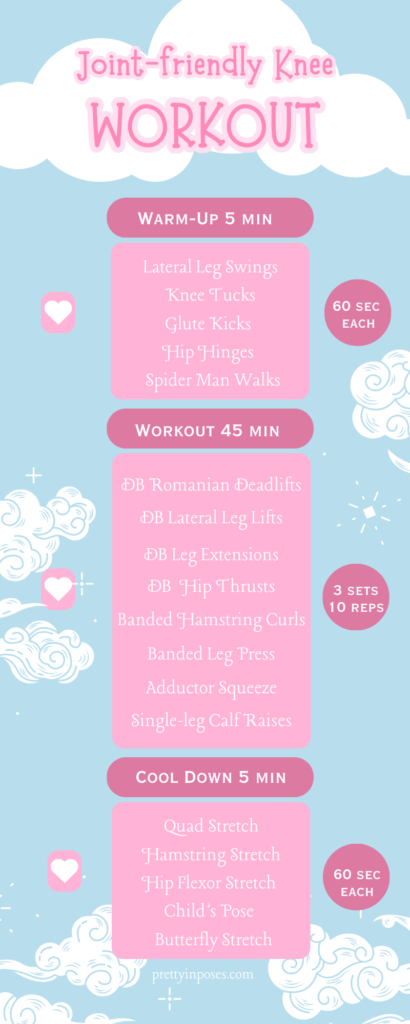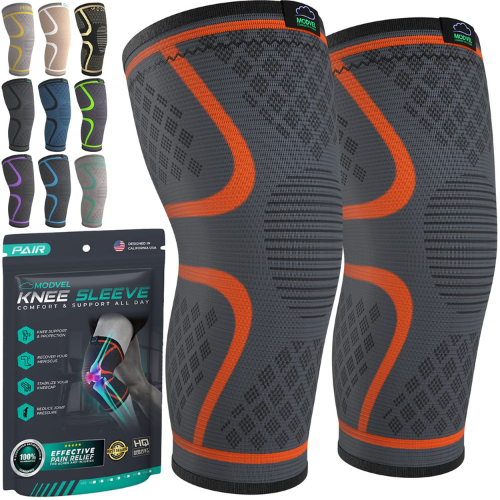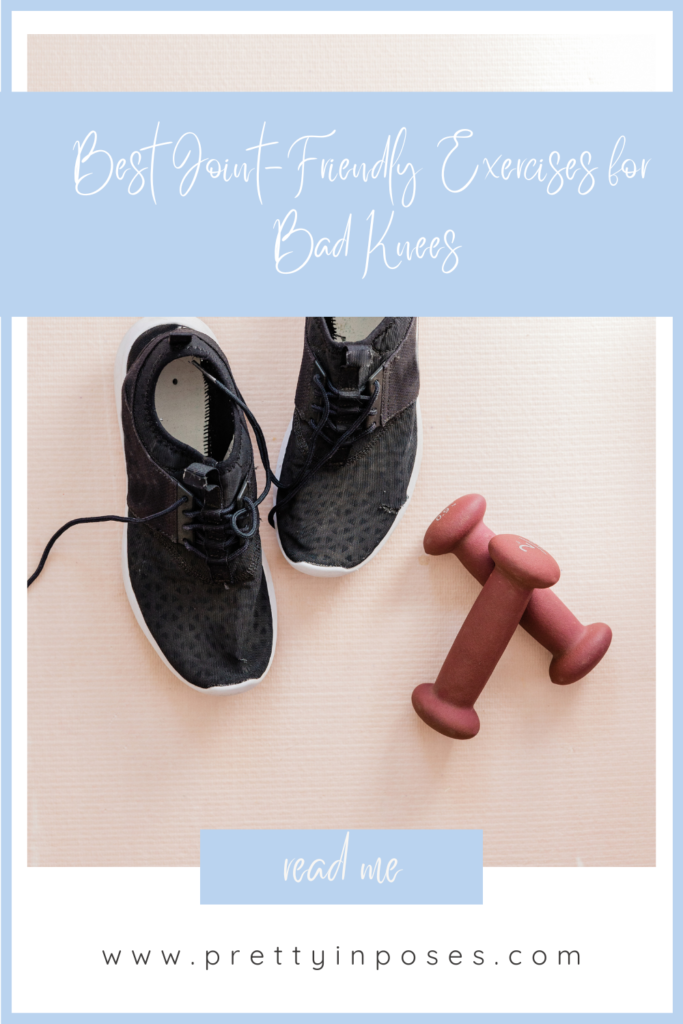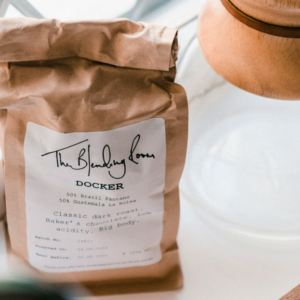This post discusses the best joint-friendly exercises for bad knees.
I’ve been a gymnast, a track and cross-country athlete, and a martial artist. So, it’s safe to say…my knees are shot.
I mean who was letting me do all of this?
Anyway, I digress. Even if you’re experiencing a little wear and tear like me or worse, that doesn’t mean you must suffer.
In this post, we’ll learn how to build strength and mobility with these joint-friendly exercises for bad knees!
This post contains affiliate links, meaning that if you choose to click through and make a purchase, I will receive a small commission at no additional cost to you.
How Do You Fix Bad Knees?
Knee pain is quite common among adults and is most widely the result of daily wear and stress from activities like walking, standing, and lifting.
Other causes of knee pain can be injury or strain. If you are experiencing any kind of discomfort, it’s best to consult your doctor or health care professional.
But in general, there are many ways you can fix your bad knees including through exercise, medication, and lifestyle changes.
Today we’re going to talk about how to use exercise to strengthen and improve the mobility of your knees.
Joint-Friendly Exercises for Bad Knees
Below are eight joint-friendly exercises for bad knees. If you can, try performing them in a single workout once a week and progress eventually to twice a week, whenever possible.
These movements were chosen specifically because they help build strength in the muscles surrounding the knee to assist in better movement and overall mobility.
Romanian Deadlifts
I’ve mentioned the power of Romanian deadlifts before, but I’ve never explained why they’re so effective at fixing bad knees.
The hip is crucial for the knee as it helps maintain proper alignment and stability, thereby reducing stress on the knee and preventing injury.
Romanian deadlifts target the glutes, hamstrings, and hips, strengthening these muscles and taking pressure off the knee.
How to Perform Dumbbell Romanian deadlifts
Stand hip-width apart and hold a weight in both hands.
Bend your knees slightly and hinge at the hips, lowering the weight along your shins.
Keep your back straight and stop when your torso is parallel to the floor.
Squeeze your glutes and return to the starting position.
Repeat for reps.
(Use a light to moderate weight-5 to 10 Ibs-)
Lateral Leg Lifts
I love lateral leg lifts and always include them in my leg workouts.
They enhance the strength and mobility of the muscles around your hips, particularly the gluteus medius located on the side of your hip.
The gluteus medius stabilizes the pelvis, ensuring proper alignment between the hips and knees during movement. This reduces stress on the knee joint and prevents injury.
How to Perform Lateral Leg Lifts
Stand tall and hold onto a chair or wall for support.
Lift one leg out to the side as high as you can, staying upright. Don’t lean to the side.
Hold for a moment and then lower it back down.
Do the same for the other leg.
Repeat for reps.
Optional: For more of a challenge, hold a weight against the thigh of your working leg and lift and lower the weight with your leg.
Hip Thrusts
Hip thrusts are another exercise that I’ve written about on this blog. They made the list because they’re great at building strength in the glutes.
Strong glute muscles are important because they keep your pelvis and femur aligned, which stabilizes the knee joint and alleviates pressure.
As someone who doesn’t like to perform many squats due to my own knee discomfort, hip thrusts can be a better alternative. They require less flexion, making them less strenuous on the joint.
How to Perform Hip Thrusts
Lie on your back with knees bent and feet flat on the floor.
Place your arms at your sides.
Squeeze your glutes and lift your hips toward the ceiling. Keep a neutral spine.
Hold for a few seconds before lowering your hips back to the floor.
Repeat for reps.
Optional: Hold a weight over your pelvis and then lift your hips.
Leg Extensions
If you’re looking for knee flexion exercises that are easier on the joints, try leg extensions.
Performing these at home in a chair rather than on a machine can be especially beneficial for the knee since they target the quads.
Your quadriceps are essential for flexion, shock absorption, stability, and support.
If your quads are weak, you won’t be able to distribute your weight evenly, which could result in injury and discomfort.
Leg extensions do a great job of building up the quads while reducing the amount of strain placed on the joint, provided you’re using a light to moderate weight.
How to Perform Leg Extensions
Sit on a chair with your feet flat on the ground.
Engage your core and extend your legs straight out in front of you, holding the weight.
Hold for a few seconds and slowly lower it back down.
Repeat for reps.
Optional: Place a light weight between your feet and squeeze tightly. Then extend leg out in front of you.
Banded Hamstring Curls
You can perform hamstring curls in a number of ways. I prefer to do them on the floor, but you could also try them standing or seated.
Standing may be gentler on the knees, but all variations work the hamstrings.
Hamstrings play an essential role in controlling and stabilizing your leg’s movement, ensuring that force is well distributed throughout the knee and reducing injury.
Though hamstring curls can be performed without any resistance, using a band can increase your overall leg strength.
How to Perform Banded Hamstring Curls
Tie a resistance band to a sturdy object and loop it around one of your ankles.
Sit in a chair with your back straight and feet flat on the ground.
Curl your heel towards your buttocks, feeling the resistance in your hamstring.
Slowly return your leg to the starting position.
Repeat for rep and then switch legs.
Banded Leg Presses
Sticking with the theme, the banded leg press should definitely be included in your leg workout.
Working with a band gives you more control over the resistance while reducing the likelihood of overloading the knee joint.
The natural movement of straightening your leg predominantly targets the quads and hamstrings, helping to stabilize and strengthen the knee.
The leg press can be performed safely lying on your back or in a seated position.
How to Perform Banded Leg Presses
Sit on the floor with a resistance band looped around your feet and holding the ends in your hands.
Push your feet forward so your leg is fully extended.
Hold for a moment and return to the starting position.
Adductor (Inner Thigh) Squeeze
You might not seem like it, but squeezing your inner thighs can significantly benefit your knees, albeit indirectly.
This exercise engages the adductor muscles on the insides of your thighs, strengthening them.
As these muscles become stronger, they enhance the stability of your hip joint, reducing pressure on your knees, alleviating pain, and improving overall knee function.
How to Perform Adductor Squeeze
Sit on a chair with a soft ball or pillow between your knees.
Squeeze your knees together to compress the ball or pillow.
Hold for a few seconds and release.
Repeat for reps.
Calf Raises
Calf raises are an excellent addition to your leg workout, especially if you want to improve your knee health.
Your calves play a crucial role in lower body function, influencing your ability to walk, run, jump, and balance.
They also aid in shock absorption, proper alignment, and mobility. Calf raises engage the gastrocnemius and soleus muscles, located at the back and lower part of your calves.
Performing this exercise consistently can increase muscle strength and endurance, defining your calves over time. You can choose which calf raise you’d like to do.
I started with regular calf raises and progressed to single-leg calf raises. But you may do them sitting down if you feel too much pressure.
How to Perform Calf raises
Lift your heels off the ground as high as you can, rising onto the ball of your feet.
Hold the position for a couple of seconds.
Lower your heels back to the ground slowly.
Repeat for reps.
Optional: Perform single-leg calf raises by lifting one foot off the ground as high as you can, rising onto the ball of your foot. Pause, then lower back down and switch legs.
Joint-Friendly Workout Routine for Bad Knees
You can add any of these exercises to your workout to help improve your knees, or combine them into a single workout.
For convenience’s sake, I just went ahead and did it for you.
Feel free to swap in more challenging exercises if you’re up for it, and keep your breaks to no more than 2 and a half minutes between sets.

What is the #1 mistake that makes bad knees worse?
If you have bad knees and you’ve already seen a doctor about it, then the one mistake you’re probably making is not moving them enough.
Movement is so beneficial for your knees. It prevents stiffness, keeps your joints mobile, and reduces your risk of injury.
Physical activity whether it’s exercising or just walking around can also boost strength, alleviate pain, and promote overall functionality.
What’s the worst thing you can do for your knees?
The worst thing you can do for your knees is to take them for granted. Our knees are paramount to our ability to move freely. It’s essential to take care of them.
This means staying active, but not overly so. Remember, too much high-intensity exercise can strain your knees.
Include low-impact exercises, a proper warm-up, and a cool-down into your routine.
Don’t forget to stretch, as it is crucial for longevity. Always perform exercises with proper technique and within your appropriate weight class.
Finally, wear supportive shoes that provide plenty of cushion and arch support to maintain proper knee alignment and reduce tension.
I also recommend wearing a knee-sleeve, particularly when performing exercises as they will provide assistance during your workout.
Just make sure you measure your knee before buying one.

Fix Your Bad Knees
As I mentioned earlier, I understand what it’s like to have bad knees.
That’s why it was important for me to select exercises that promote strength without causing too much strain.
I intentionally omitted exercises like squats and lunges, even though they’re excellent for building stronger knees because they can put more pressure on your legs.
This workout is designed to gradually build strength and stability while minimizing unnecessary discomfort.
Plus, you can always add more exercises to increase the challenge. I hope these exercises help you develop legs of steel!







Leave a Reply